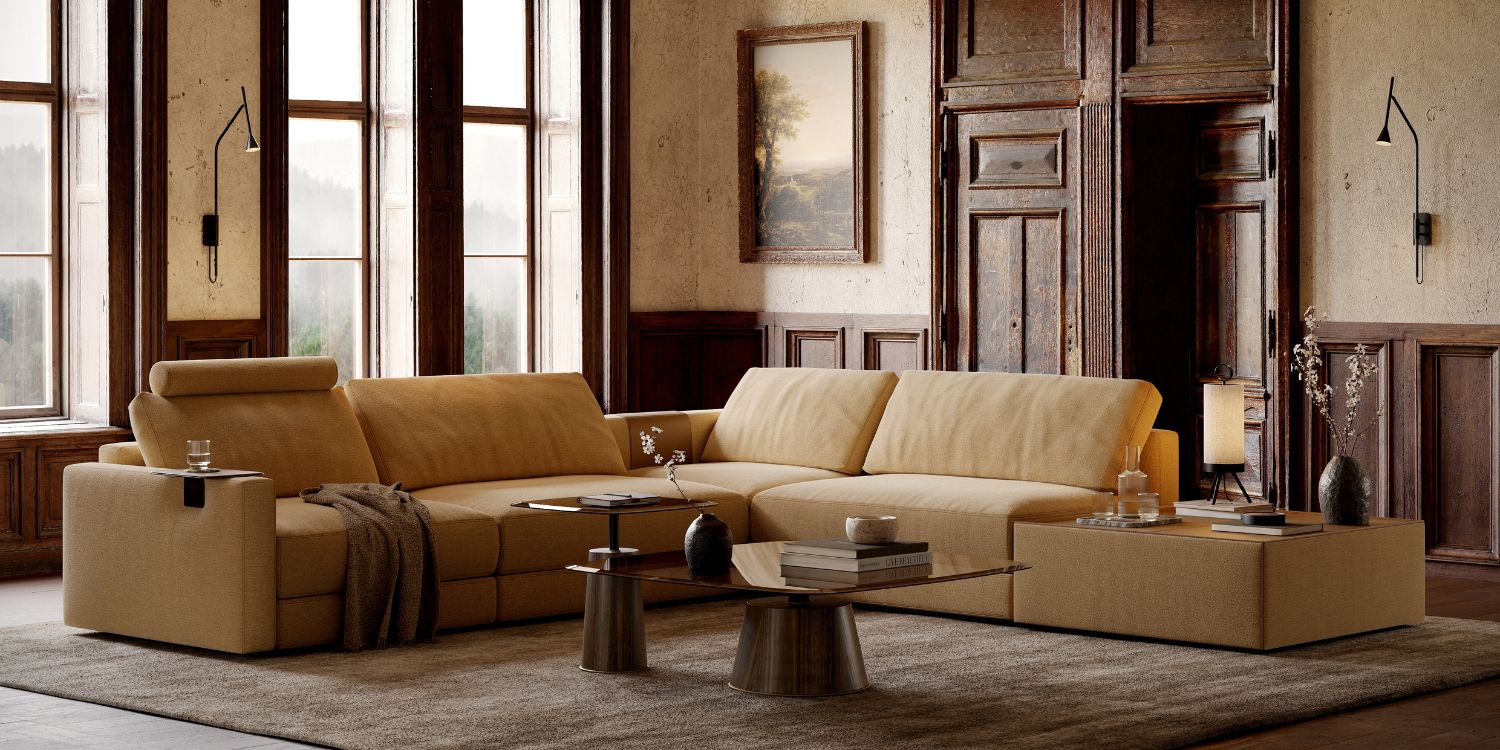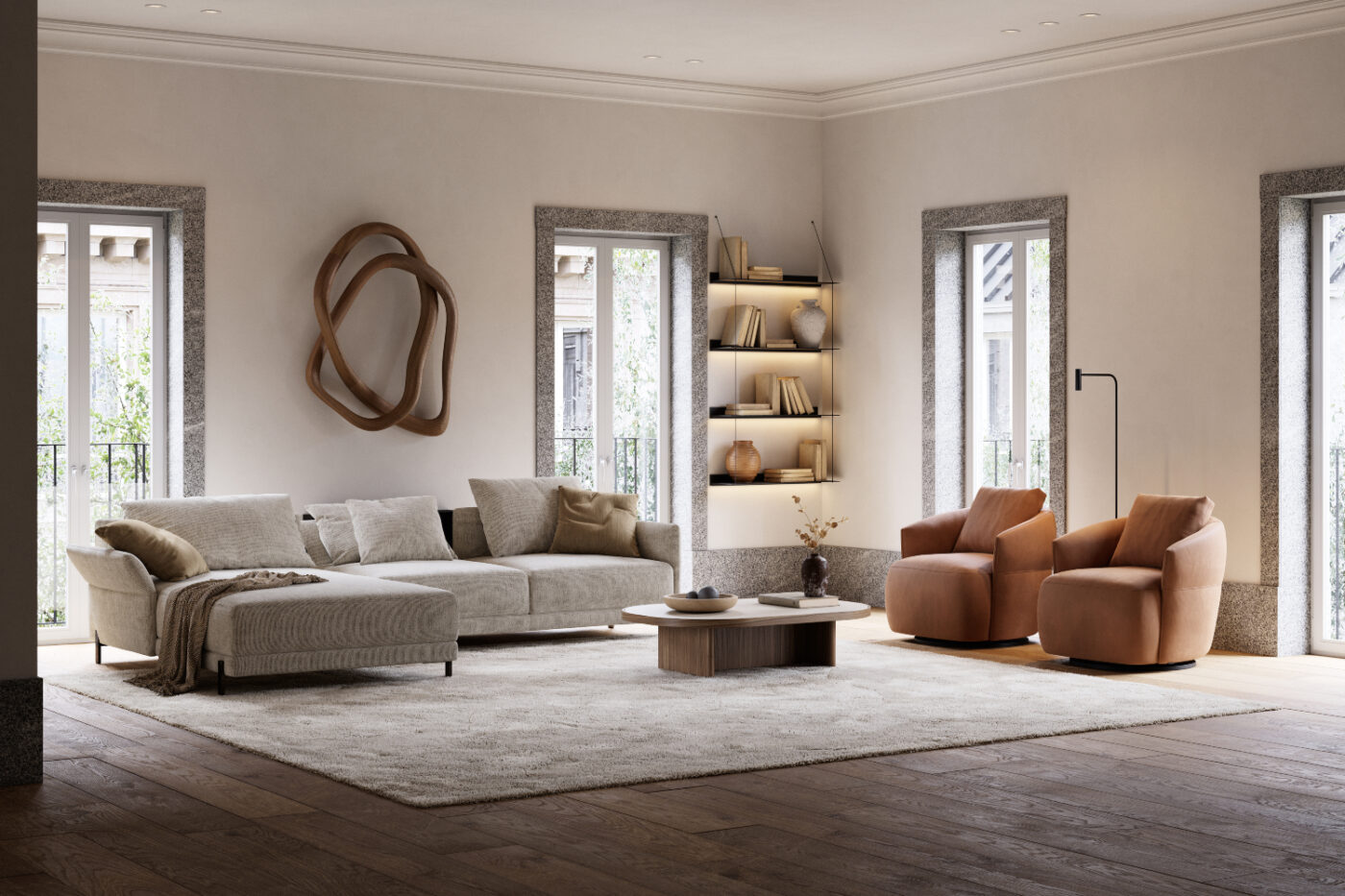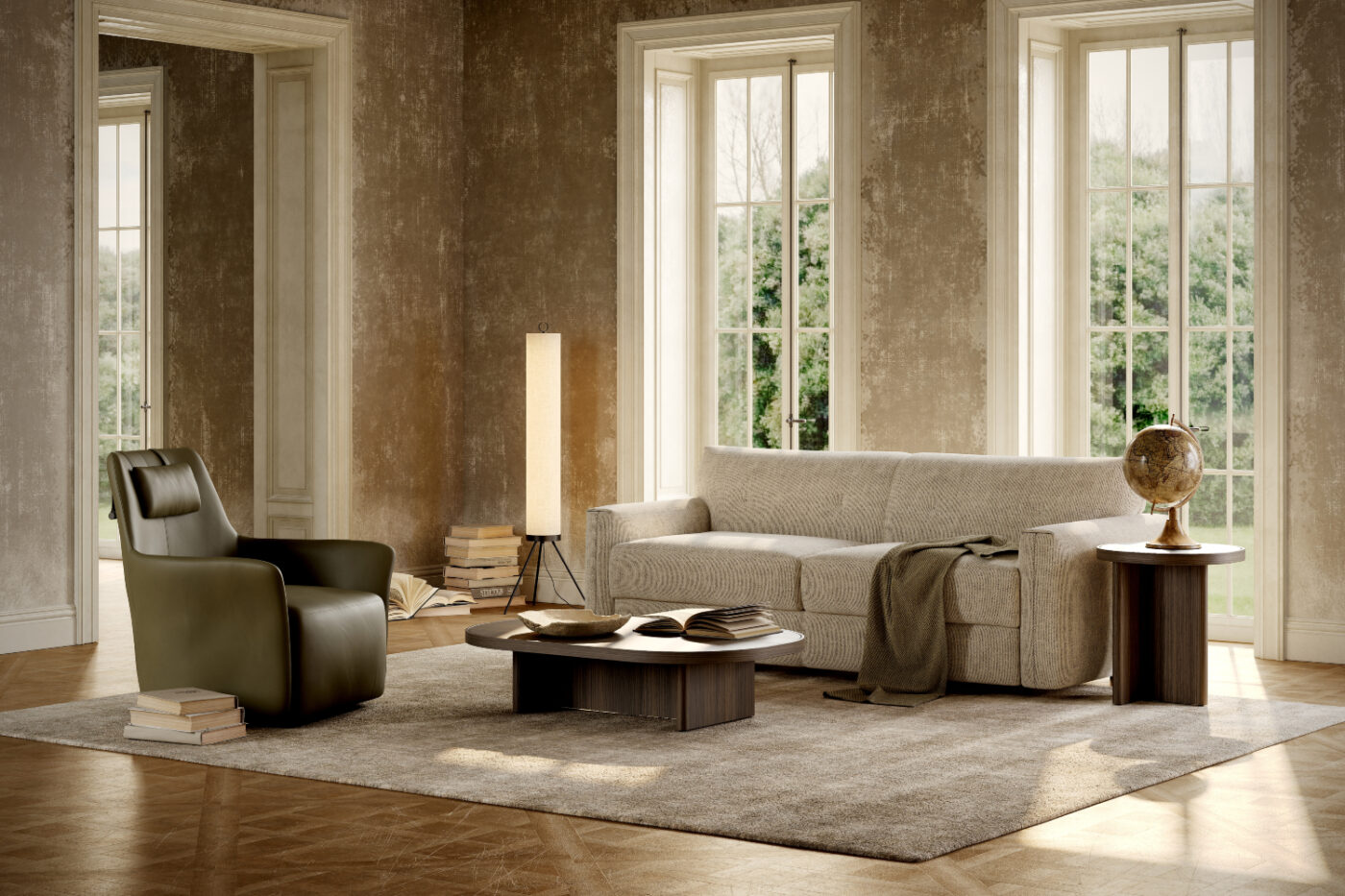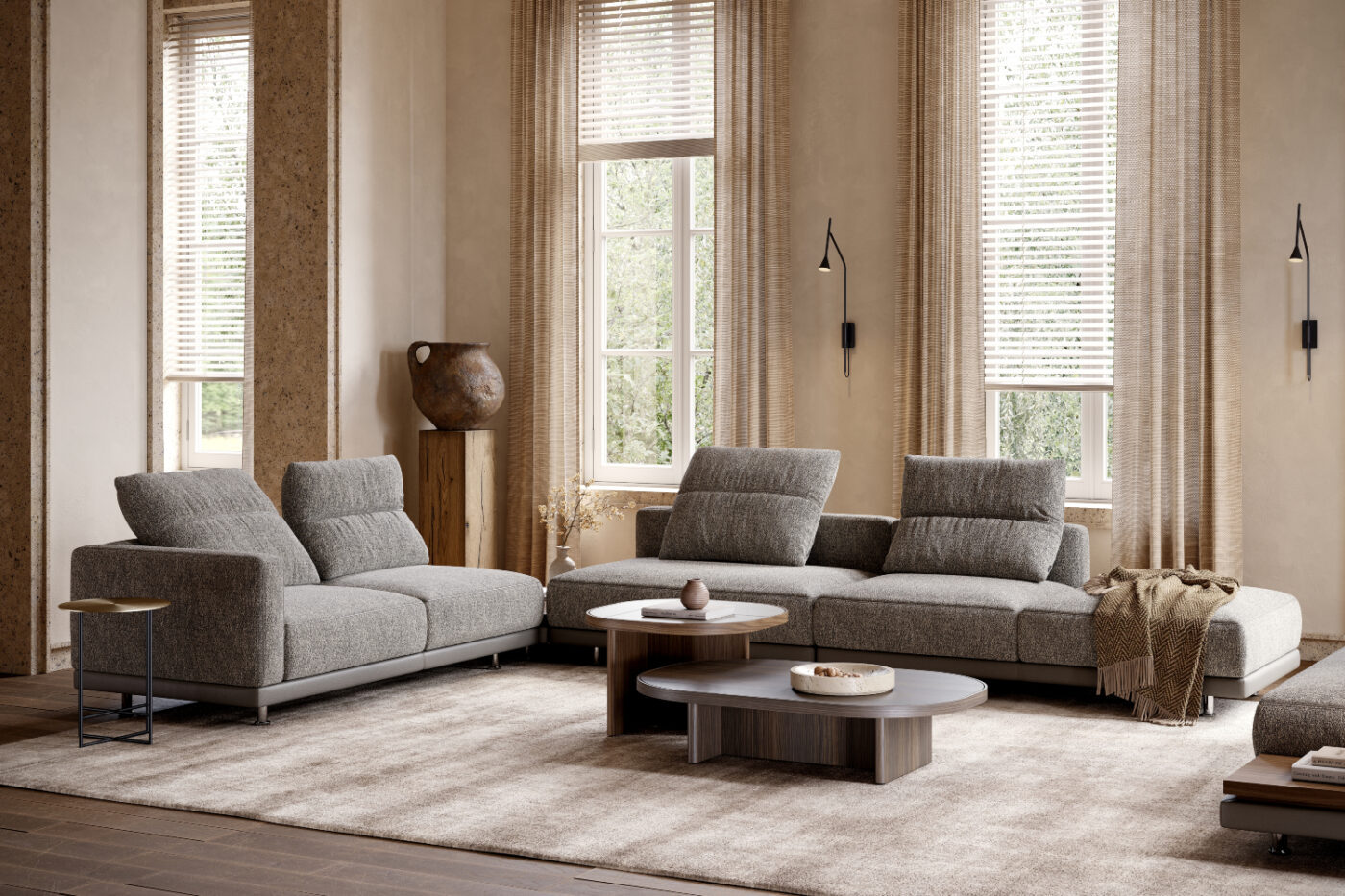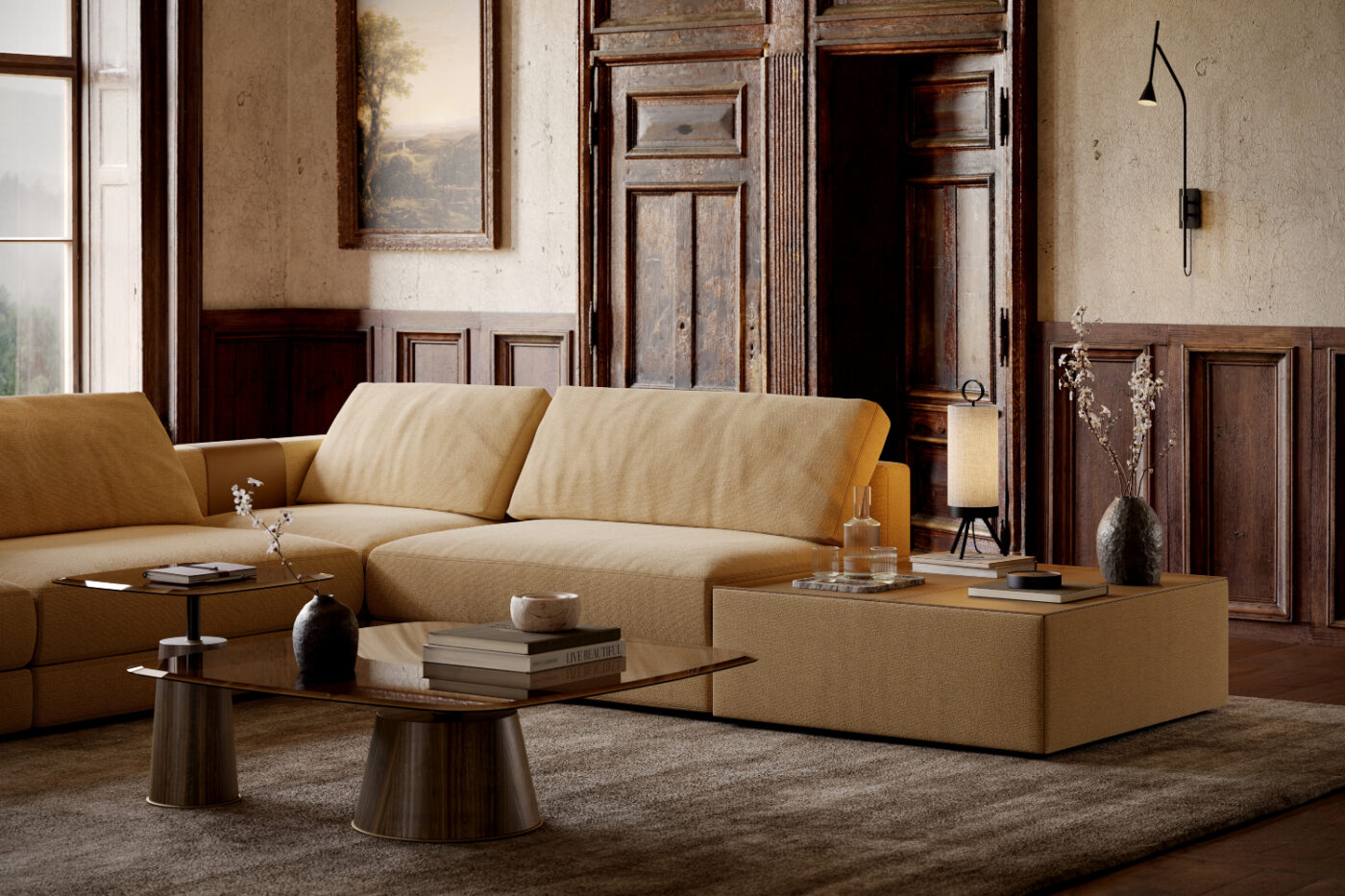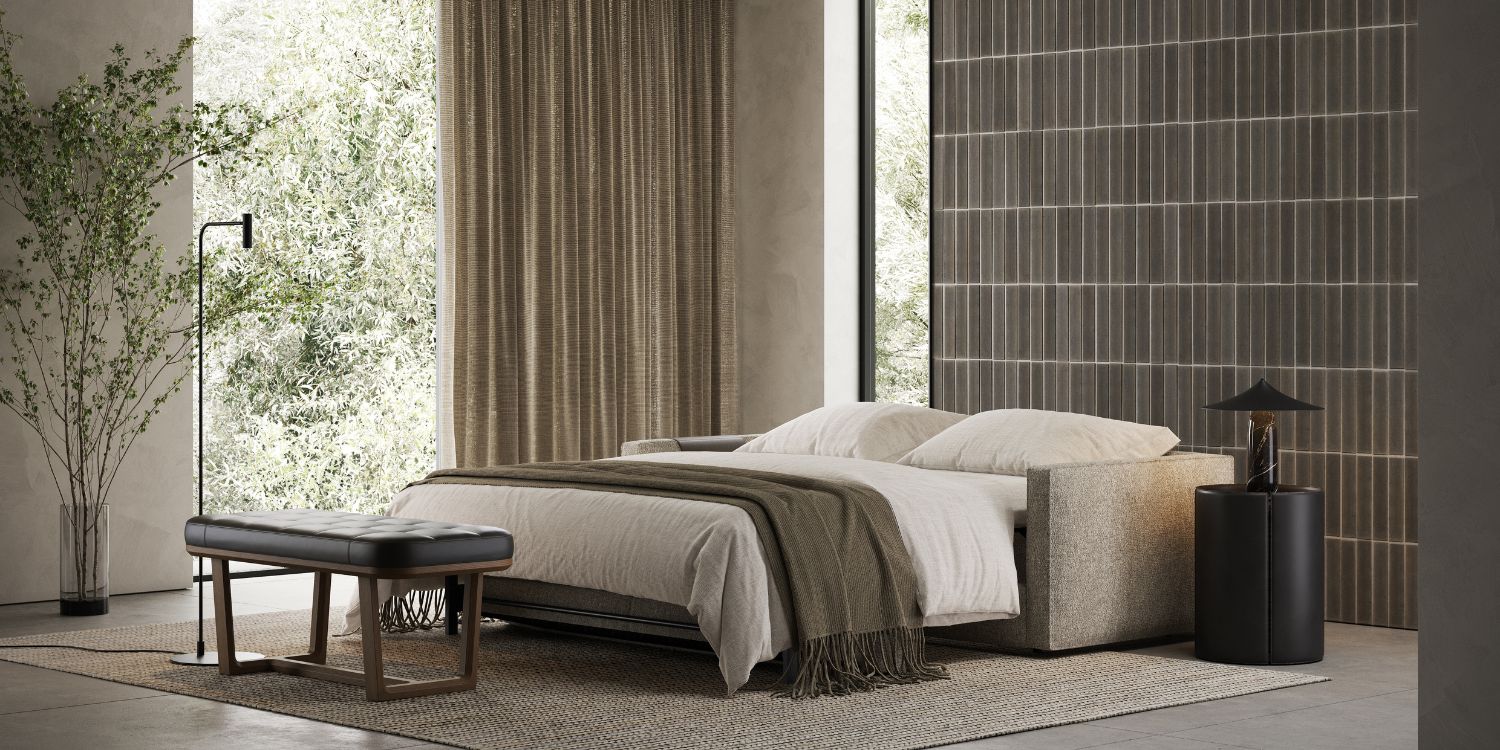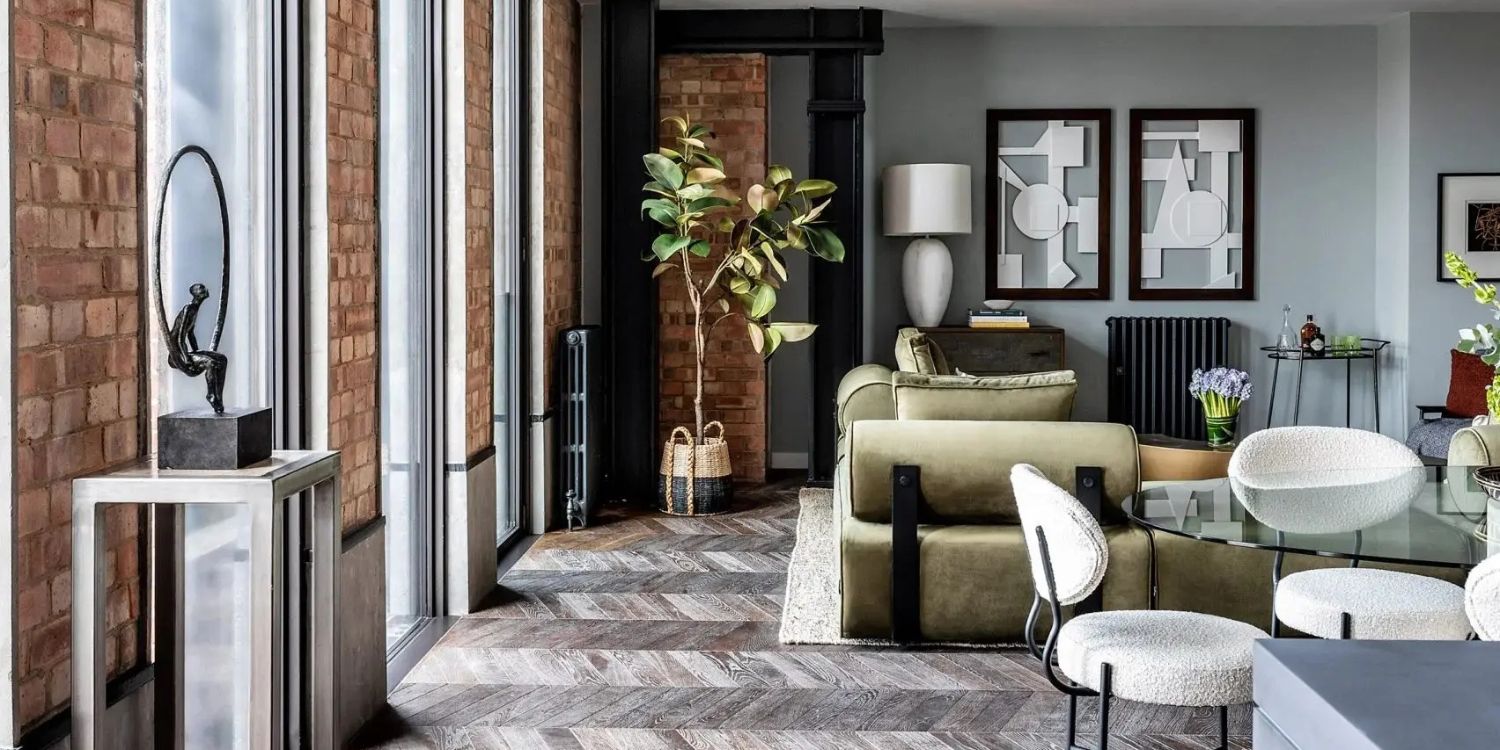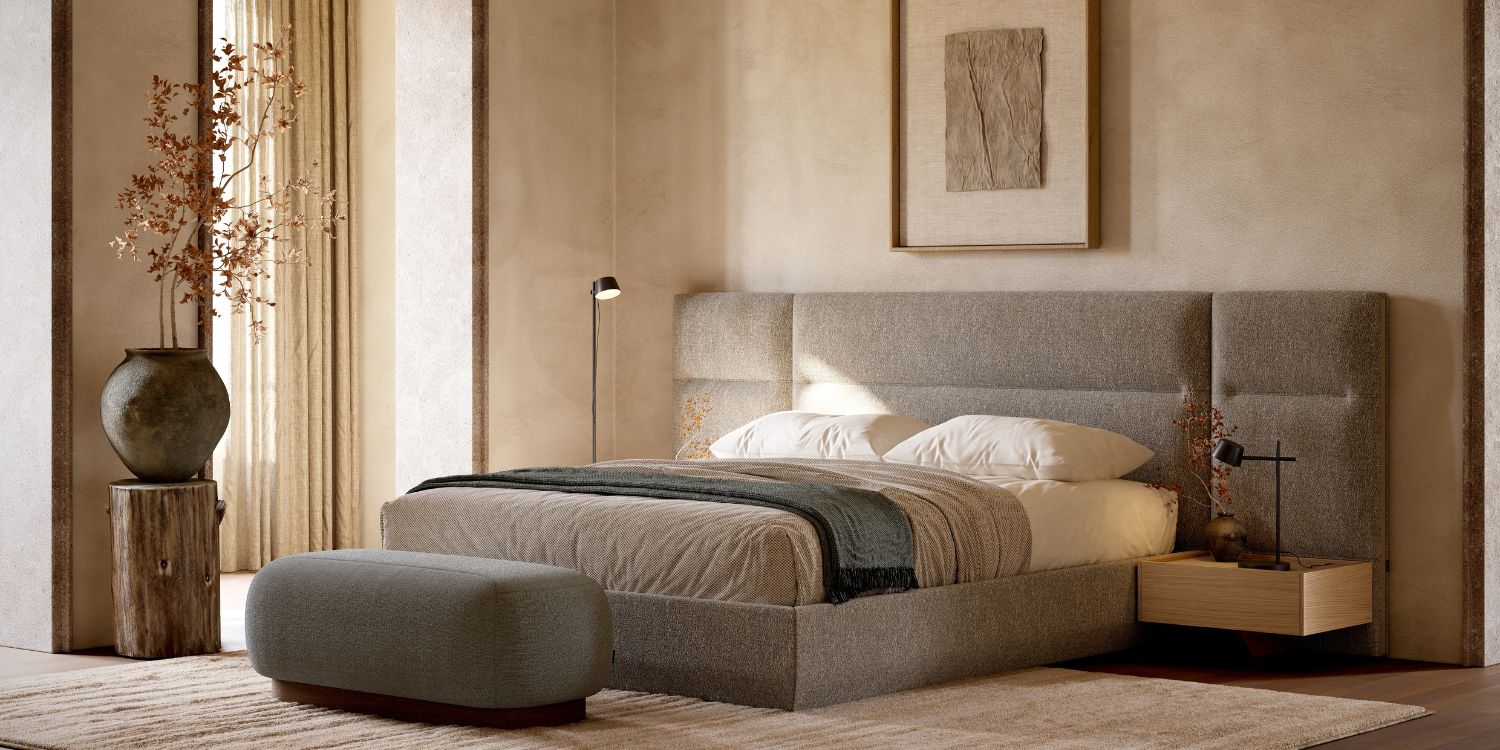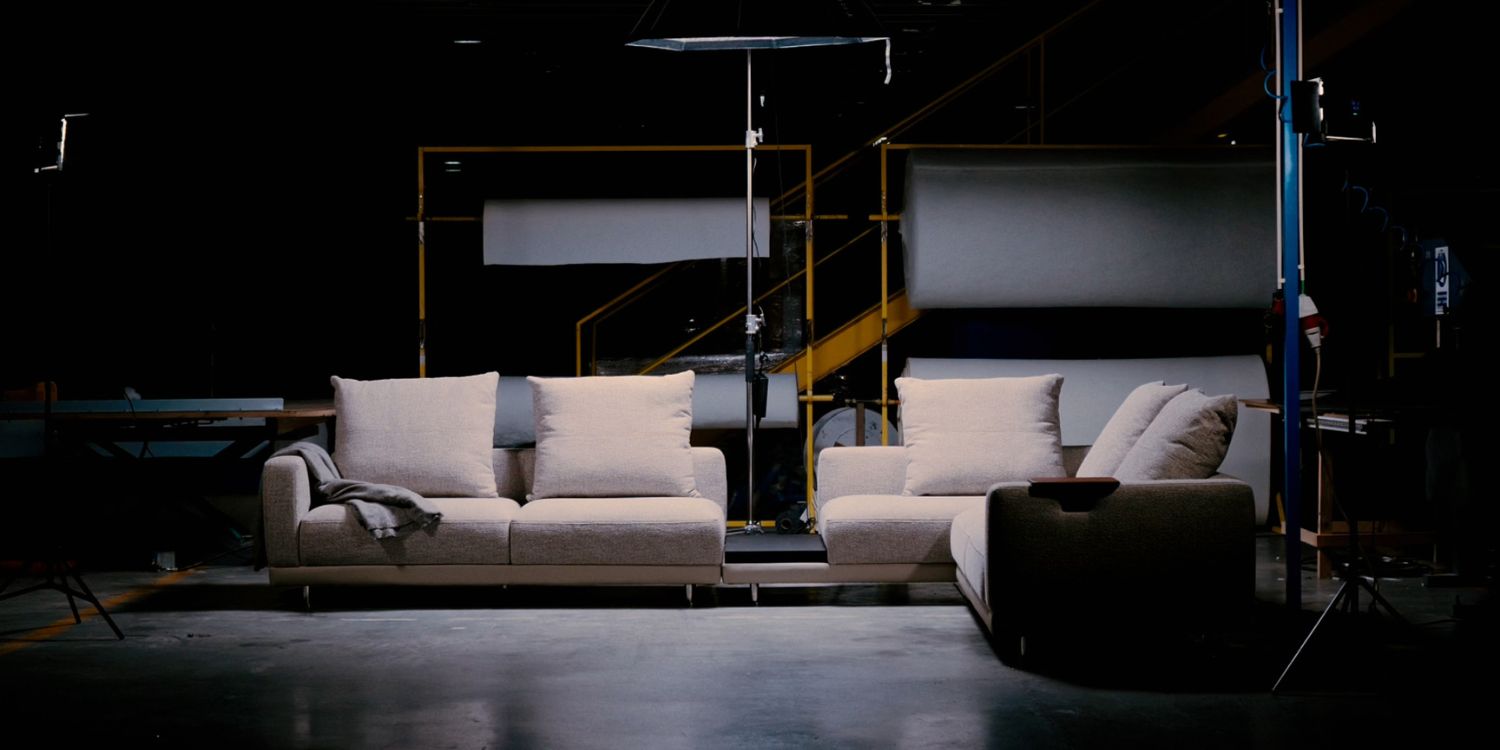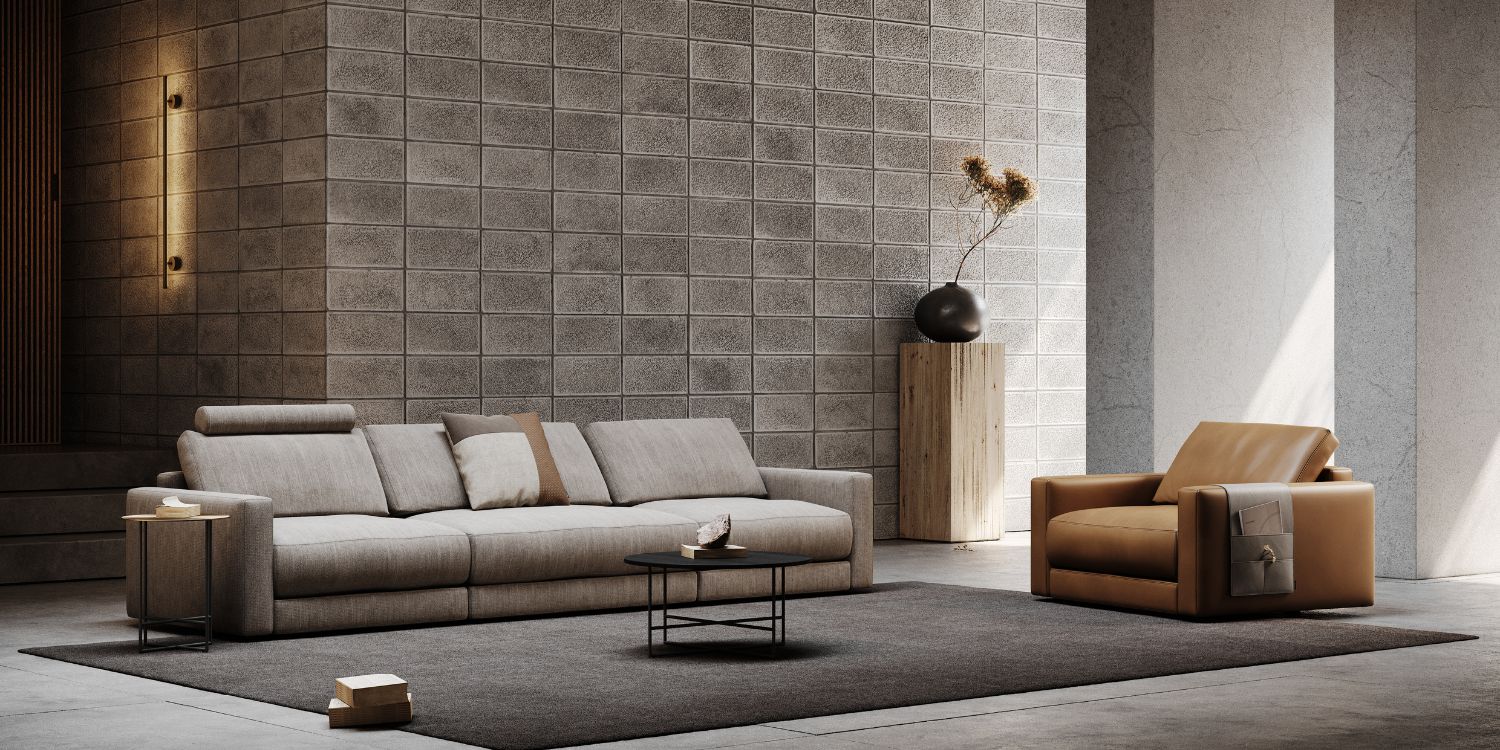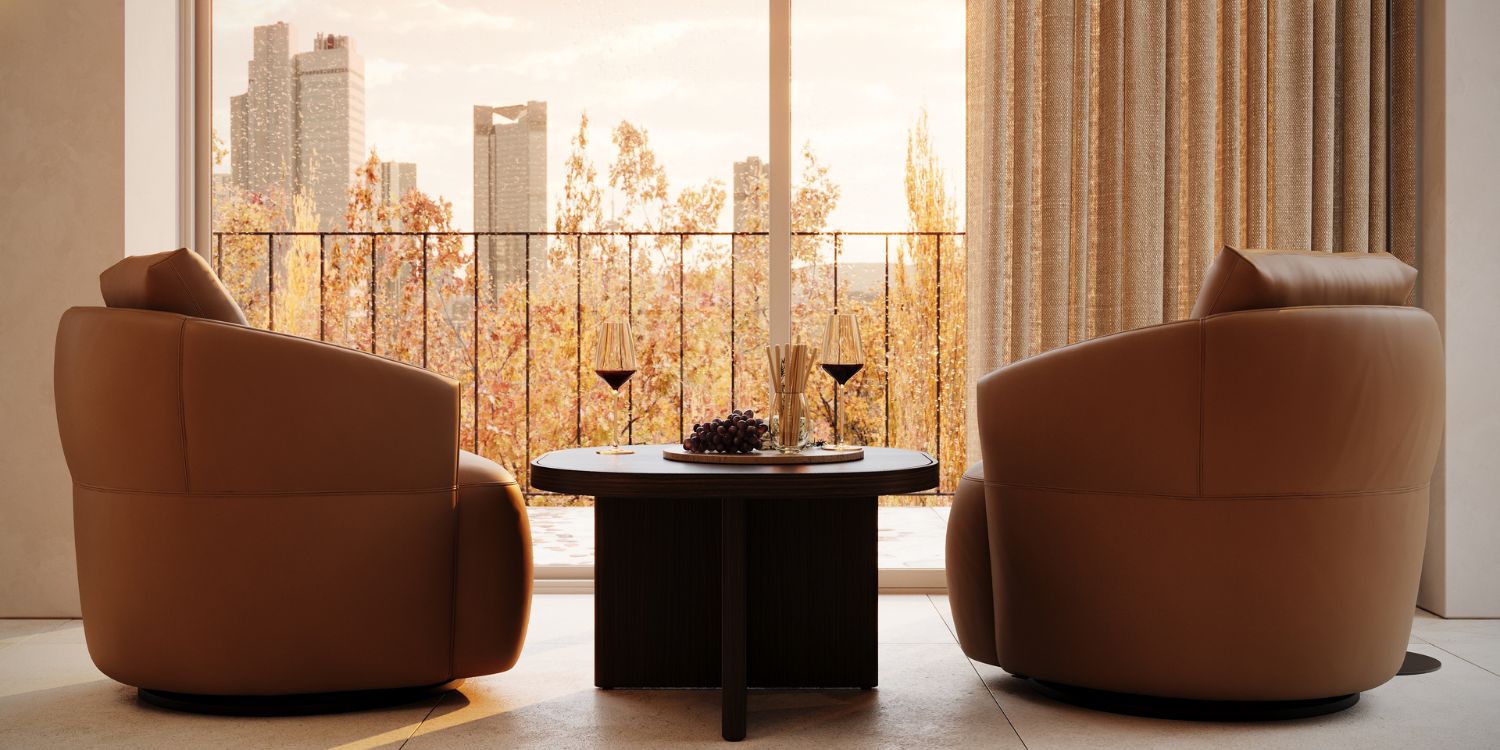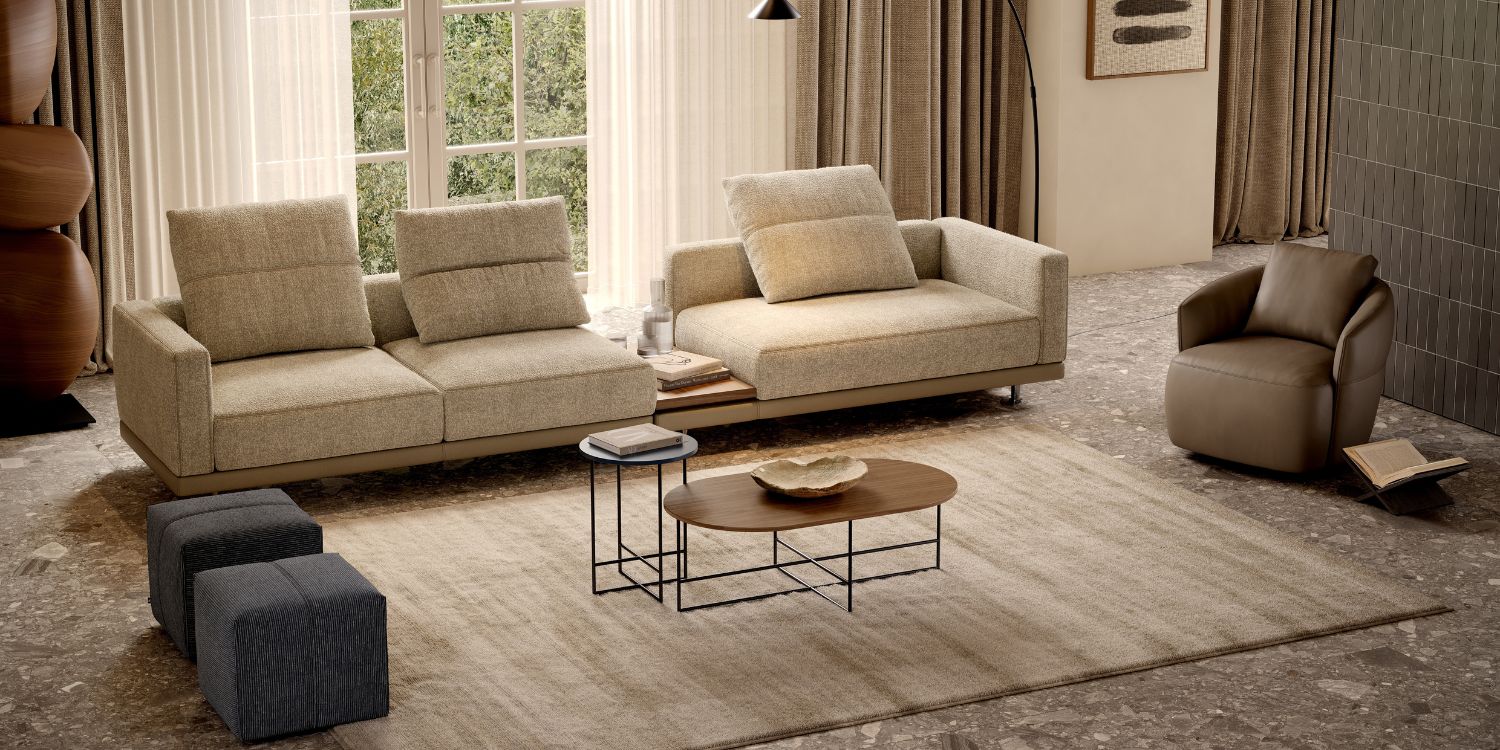The living room has always been the emotional centre of the home, but in 2026, its role expands even further. As lifestyles shift toward hybrid work, curated hosting and wellness-driven interiors, the living room evolves into a multifunctional space – one that must feel beautiful, perform effortlessly and adapt intuitively to daily rituals.
For interior designers, it is also a space where trends become tangible. It’s where materials, proportions and craftsmanship are scrutinised up close. Clients demand comfort without compromise, sophistication without rigidity and timelessness with a contemporary twist.
In 2026, living room design reflects a calmer, more intentional way of living. The aesthetic language becomes softer, deeper and more grounded. The question is no longer “What’s trending?” but “What creates an emotional response?”
Let’s explore the living room trends for 2026 and how you can translate them into elevated design solutions for residential and commercial projects.
1. Sensory Comfort as a Baseline Expectation
For years, comfort was a trend. In 2026, it becomes non-negotiable. Clients want furniture that hugs the body, textures that soothe and layouts that feel human-centric.
What’s driving this?
- An ongoing preference for slow living;
- The rise of wellness-focused interiors;
- A desire for spaces that counterbalance digital overload;
Expect an abundance of rounded sofas, deeper seating proportions, plush upholstery and tactile layering that combines bouclé, chenille, washed linen and soft leathers.
Design insight: Homes with open layouts require visual softness to balance the hardness of their surfaces. Curved pieces, in particular, will dominate living room compositions for their calming, fluid presence.
2. Low, Architectural Silhouettes
A shift from the highly cushioned, oversized furniture of recent years: in 2026, the living room gravitates toward low-profile silhouettes with architectural purity. Think sculptural sofas, monolithic armchairs, disciplined proportions and bases that feel seamlessly integrated into the form.
These shapes bring a refined, gallery-like atmosphere to the living room – ideal for clients who want sophistication without excessive ornamentation.
Why it matters:
Low silhouettes elongate the room visually, making them perfect for smaller apartments, luxury penthouses or hospitality lounges with double-height ceilings.
3. Earth-Derived Palettes, Reinvented
Beiges and browns remain essential, but 2026 redefines earth tones with complexity and nuance:
- Caramelised neutrals
- Mocha mousse (already gaining traction across upholstery brands)
- Olive-gray hybrids
- Soft clay
- Terracotta rose
- Blackened bronze accents
The living room becomes a cocoon of warm, grounded colour. These palettes pair beautifully with wood, brushed metals, handmade ceramics and natural stone.
Design tip: Tone-on-tone layering is particularly effective in creating serene yet elevated environments.
4. Intelligent Modularity
Flexibility becomes a design strategy. With multipurpose living rooms now the norm, clients prioritise furniture that adapts: modular sofas, adjustable backrests, smart side tables, poufs with storage and movable partitions.
2026 modularity is not only functional, it’s elegant. Luxury brands explore refined modular systems that maintain design integrity regardless of configuration.
Practical implications: For interior designers, modularity simplifies space planning and allows more precise customisation per project.
5. Artisanal Surfaces & “Quiet Luxury” Materials
In 2026, the expression “quiet luxury” reaches maturity and becomes the visual philosophy of the living room. Expect:
- Honed marble instead of glossy stone
- Smoked oak with visible grain
- Handwoven textiles
- Applied microcement in warm neutrals
- Patinated metal accents
- Upholstery with subtle weave variations
Clients gravitate toward authenticity, provenance and material honesty. Craftsmanship becomes a talking point: something they want to see, feel and understand.
6. Statement Accent Chairs
The living room continues to embrace the sculptural accent chair as a focal point. These pieces often contrast with the main sofa – a curated approach that elevates the space and introduces movement.
Expect silhouettes inspired by contemporary art, mid-century reinterpretations and organic forms reminiscent of nature.
Why designers love this trend: Accent chairs provide flexibility with colour, texture and structure – allowing designers to experiment without overwhelming the room.
7. Technology that Disappears
Living rooms in 2026 integrate technology invisibly. Clients want seamless comfort, not visual clutter.
Emerging expectations include:
- Wireless charging surfaces
- Discreet audio solutions
- Understated lighting automation
- Hidden cable management
- TVs that blend into architectural elements or transform into art
The goal is to combine convenience with aesthetic purity.
8. Balanced Maximalism
Minimalism stays, but maximalism re-enters quietly – through curated arrangements, books, objects and layered lighting. Designers no longer choose between the two; instead, the living room sits comfortably between these philosophies.
Call it balanced maximalism: expressive but controlled, personal but intentional.
Living room trends for 2026 are all about intentionality, comfort and sophistication. For interior designers, the evolution opens exciting opportunities:
- More room to experiment with form and texture
- Greater demand for modular and custom solutions
- Increased appreciation for craftsmanship and material quality
- A shift toward meaningful, emotional storytelling through design
When you embrace these trends, you create living rooms that are enduring, adaptable and deeply connected to how people actually live.
YOU MAY ALSO LIKE: Textile Trends 2026: Patterns, Weaves & Colour Directions
We are working every day to bring you the most stylish ideas to fulfil your inspiration and to create the best interior design projects, so feel free to follow our Instagram Page and subscribe to our newsletter.

